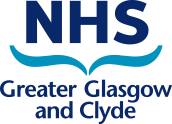Safe Prescribing of Oral Liquid Medicines for Children
Good Prescribing Practice Across The Interface
Key Messages
-
To help prevent dosing errors upon admission to hospital, the correct concentration of a liquid medicine should be confirmed with two sources and noted on every medicines document e.g. medicines reconciliation form, IDLs and drug Kardex/HEPMA.
-
Where a concentration is not documented – always check.
-
The concentration should not be changed at any time. If this is not possible (e.g. supply shortages), ensure that this is clearly documented and the change is communicated to the patient/carer and other healthcare professionals involved in the patient’s care.
-
Acute care IDLs on Portal (Orion) should clearly state the liquid concentration prescribed and dispensed.
-
For prescribing continuity in Primary Care, it is good practice to continue the same concentration to ensure patient safety. Where a switch is necessary, the patient/carer should be educated on any changes which result in a different administration volume.
-
All healthcare professionals should discuss liquid doses and volumes with the patient/carer at the point of collection, to ensure that the medication dispensed is what is expected, and to identify any discrepancies over the volume to be administered.
Background
Many liquid medicines have multiple concentrations; this applies to licensed and unlicensed preparations. Switching between concentrations is a known cause of dosing error.
- When a prescription is issued or dispensed in acute or primary care for a different concentration than usual, it may result in the patient receiving the wrong dose.
- For patients on long-term liquid medicines, the concentration is visible on the ECS. These preparations should be continued in hospital where possible and not changed at discharge. Always check two sources, including the patient/carer and in situations where a concentration change may have occurred, looking at the bottle or checking with the dispensing pharmacy is advised.
- Patient/carer education around liquid medicines usually focuses on the volume to administer, e.g. five millilitres, rather than the dose e.g. 50mg/5mL. When counselling, it’s important to clarify the dose of the medication as well as the administration volume. Healthcare professionals should encourage patients/carers to identify the dose of medication as a way of minimising the risk of volume dosing errors.
Clinical Example
The standard concentration of spironolactone stocked in the Royal Hospital for Children (RHC) is 50mg/5mL. If a child were commenced on spironolactone 4mg twice daily, the volume is 0.4mL twice daily. If a post-discharge prescription were issued for an alternative concentration of 5mg/5mL, the volume to provide the same dose is 4mL twice daily. There exists the risk that the patient/carer will not realise that the concentration has changed and continue to administer 0.4mL twice daily, resulting in tenfold under-dosing. Other steps that have been taken to minimise this risk include:
- Implementation of a preferred concentration list within RHC acute care for ward stock orders and discharge prescriptions. This will be highlighted on the preferred selection list when choosing a preparation on Orion MR IDL system
- The Neonatal and Paediatric Pharmacists Group publishing a list of preferred strengths of unlicensed liquid medicines which is available here: http://nppg.org.uk/standardised-strengths-of-liquid-medicines-for-children/
Published 01/12/2021. Medicines Update blogs are correct at the time of publication.
